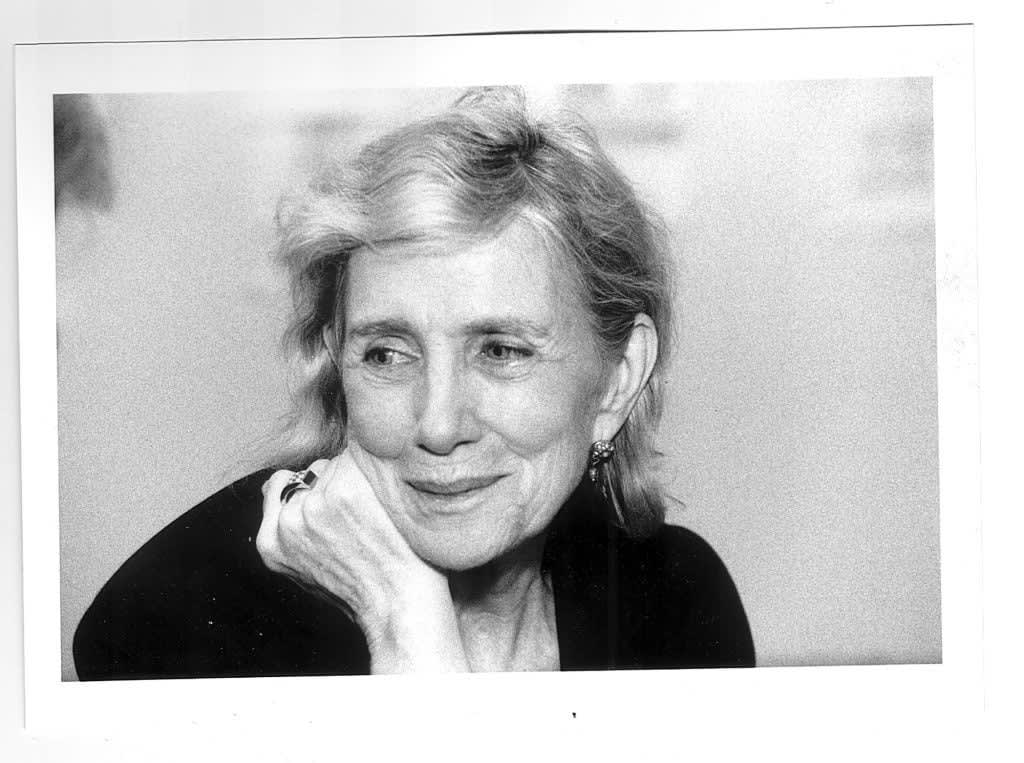‘Somehow You Do the Impossible’: At 95, Dorothea Rockburne Reflects on Her Polymathic Career
Artnet News
Katie White, January 9, 2025
At 95 years old, Dorothea Rockburne is still giving form to the geometries of the universe. The abstract artist who, over the decades steadily earned acclaim for her drawings, installations, and sculptures that articulated mathematics of set theory, topology, astronomy, and phenomenology, greeted me at her Soho loft where she has lived and worked for over 50 years, on a day this past August.
In the open, surprisingly quiet space, Rockburne was accompanied by her kitten, Mickey Mouse, who was still less than a year old. Her assistant, Will, popped in and out of the apartment. Rockburne, who was born in Montreal in 1929, is regarded as one of the defining New York artists of the second half of the 20th century. (I should note that there has been some confusion about Rockburne’s birth year, with many galleries and institutions listing it as 1932. Rockbrune was, in fact, born on October 18, 1929. ‘She fudged her birthday to make herself appear three years younger, for years! Since she hit 95 she wants everyone to know her real age,’ her studio explained of the discrepancy.)
This Soho loft, while still an active studio, is also an archive of the artist’s life’s interests, with shelves and tables covered with ranging books on Giotto to recent mathematics periodicals. Rockburne moved into the loft with her daughter in 1972, when they were evicted from a studio and apartment on Chambers Street. “Somebody told me about this place. It seemed quite challenging because it’s so big, but I didn’t have time to look for something,” she recalled, “But it has a ton of light and it’s been a terrific space.”
Here, over the decades, Rockburne pushed her ever-evolving, polymathic approach to art-making, incorporating unlikely materials from plain paper and vellum to crude oil, grease, and tar.
Right now, over two dozen works by Rockburne, many made in this very studio, are on view in “The Light Shines in the Darkness and the Darkness Has Not Understood It” an exhibition curated by Lola Kramer, at Bernheim Gallery in London (on view until January 25). The exhibition marks Rockburne’s first European survey and includes work from 1967 to 2013, many of which are being shown outside the U.S. for the first time. Later this month in Paris, Ceysson & Bénétière Gallery will open an exhibition showcasing three major series by Rockburne—Trefoils, Blue Collages, and Reflections—underscoring the breadth of her artistic experimentation (January 29-March 15).
Tracing the arc and evolution of Rockburne’s career, the Bernheim Gallery show includes seminal early experiments with wrinkle-finish paint to her defining folded works in vellum and linen along with her topology-based geometric paintings The exhibition title is a translation of the Latin phrase “Lux in tenebris cet et tenebrae eam non comprehenderunt,” which appears in the Gospel of John. The quotation is one Rockburne translated and referenced with some frequency in the late 80s. It speaks, poetically, to Rockburne’s interests in seemingly diametrical fields: shadow and light, structure and plane, color and transparency.
Rockburne is, in many senses, a quintessential New York artist. After graduating from Black Mountain College in the early 1950s, Rockburne, like her classmates and friends Robert Rauschenberg and Cy Twombly, made her way to New York, where she integrated herself into the art world. The earliest work in the exhibition is Tropical Tan which dates to 1967–68, a period when Rockburne’s career was rising. Also included is her influential Domain of the Variable (1972), a work in the collection of Dia, which appeared on the cover of Artforum in March 1972. Other highlights include her Golden Section Paintings (1974-76) and Egyptian Paintings (1979-80), which were prominently included in Rockburne’s 2018 survey at Dia Beacon. She is currently represented by David Nolan Gallery, where she had a major exhibition “Giotto’s Angels & Knots” in 2021 and 2022. “New York is always changing, always growing,” she shared. “There’s always some individual or group that crack it and change it all over again, turn it into something else, and it’s fascinating to watch over the years.”
